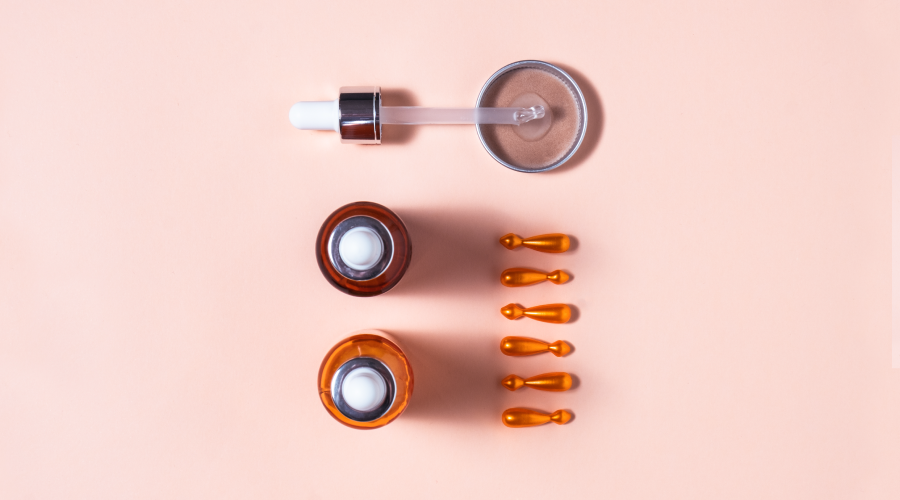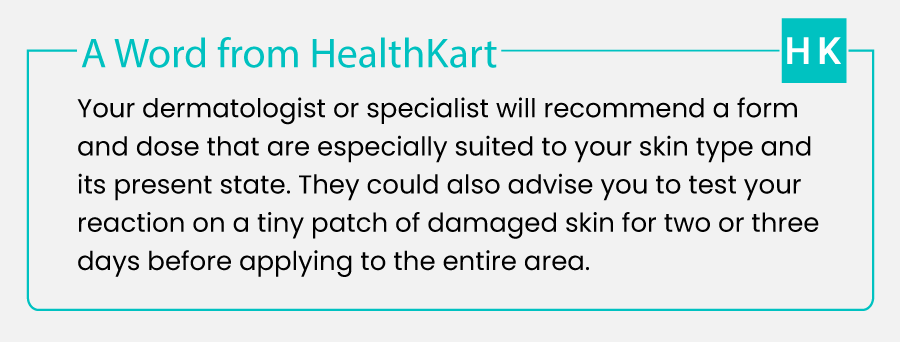

A naturally occurring beta hydroxy acid called salicylic acid can be found in plants like willow bark. In addition to acting as an exfoliator to get rid of dead skin cells, it contains anti-inflammatory and antibacterial qualities. Salicylic acid for acne is present in many face cleansers and skin care products in varied concentrations.
In skin care treatments designed to treat acne, salicylic acid is a frequently used component. It helps exfoliate the skin and clear clogged pores. This article explains about salicylic acid, how it can be used to treat acne, how much to use, any possible side effects, and if it is a safe and reliable option.

How Acne Treatments with Salicylic Acid Work?
Excess oil and dead skin cells clog skin pores, resulting in acne. Additionally, if this becomes infected with bacteria inside the pore, it can lead to irritation and pus-filled pimples.
Using salicylic acid for acne works by clearing blocked pores. This is accomplished by breaking down the connections between dead skin cells, allowing them to more easily exit the pore as well as breaking down lipids such as sebum. Salicylic acid also reduces the skin’s production of sebum, which prevents breakouts. If you aren’t seeing improvements after 6 weeks, consult a dermatologist.
What Form & Dosage of Salicylic Acid for Acne Should Be Used?
Your dermatologist or specialist will recommend a form and dose that are especially suited to your skin type and its present state. They could also advise you to test your reaction on a tiny patch of damaged skin for two or three days before applying to the entire area. In order to get rid of their acne, adults should use topical products like:
| Form | Percentage of Salicylic Acid | How to use |
| Gel | 0.5–5% | Once per day |
| Lotion | 1–2% | 1 to 3 times per day |
| Ointment | 3–6% | As required |
| Pads | 0.5–5% | 1 to 3 times per day |
| Soap | 0.5–5% | As required |
| Solution | 0.5–2% | 1 to 3 times per day |

Incorporating Salicylic Acid in Your Skincare Routine
It can be a little difficult to know how to include SA products in your skincare routine. Should I go for a salicylic acid cream for acne? Or should I use salicylic acid gel for acne?
With salicylic acid, it actually depends on the product you’re using. If you’re using it as a cleanser, apply it once in the morning and once at night. Simply reduce how often you wash your face with this cleanser if you do encounter some dryness. If you have a spot treatment, wash your face first and then apply the cream to the spots where you have breakouts.
Apply your moisturiser and SPF after waiting for the lotion to dry (one to two minutes). Just make sure your skin has absorbed the spot treatment before applying your moisturiser to avoid wiping it all over your face.
It’s crucial that you follow the aftercare instructions if you decide to get a chemical peel using salicylic acid for acne marks. You should only use light cleansers and moisturisers suggested by a dermatologist for the first two days after a chemical peel or until discomfort has subsided.
You can resume your usual skin-care routine after the first 48 hours. If you do have irritation, your dermatologist could advise you to use a topical steroid to more effectively combat the itch and inflammation.
Does Salicylic Acid Have Any Side Effects?
Salicylic acid is generally thought to be harmless, however it can initially irritate the skin. Additionally, it might remove too much oil, leaving your skin feeling dry and possibly irritated.
Other side effects include:
- Skin tingling or stinging
- Itching
- Peeling skin
- Hives
Precautions to be Aware of Before Using Salicylic Acid
Salicylic acid can be found in over-the-counter treatments that you can purchase at your local grocery store but you should consult your doctor before using it. Some points to consider are:
- Allergic conditions: A history of allergies to salicylic acid or other topical treatments should be disclosed to your doctor.
- Use in children: Due to the fact that their skin absorbs salicylic acid more quickly than adults’, children may be more susceptible to skin irritation. Children under the age of 2 shouldn’t use salicylic acid products.
- Drug interactions: Salicylic acid and some medicines don’t mix well. Tell your doctor about all of the medications you are taking right now.
When to See a Doctor?
Before using products containing salicylic acid, people with following conditions may need to speak with their doctor:
- Individuals with a pre-existing illness that affects their kidneys or liver.
- Those who are sensitive or allergic to SA or any of the other substances stated on the product label.
- Individuals who are taking medicine or who will soon get a lab test.
- Women who are lactating or pregnant.
After using a salicylic acid product for 6 to 8 weeks, if a person’s acne does not get any better, they should consult a dermatologist to talk about other treatment alternatives.
Anyone who experiences side effects while using acne treatments with salicylic acid should stop using the product and contact their doctor. One should seek emergency medical assistance if they experience allergic response or salicylic overdose symptoms.
Conclusion
In skin care products, salicylic acid can be a useful component for treating acne. Through the breakdown and removal of dead skin cells and oil, it can help in clearing blocked pores.
Skin irritation or peeling are examples of moderate side effects that salicylic acid may cause. People should stop using the product and call their doctor if they suffer more serious effects.
It may take 6 to 8 weeks to see effects from salicylic acid or other acne treatments. After this period, anyone who does not notice an improvement in their acne may want to speak with a physician or dermatologist for guidance on other treatment possibilities.




